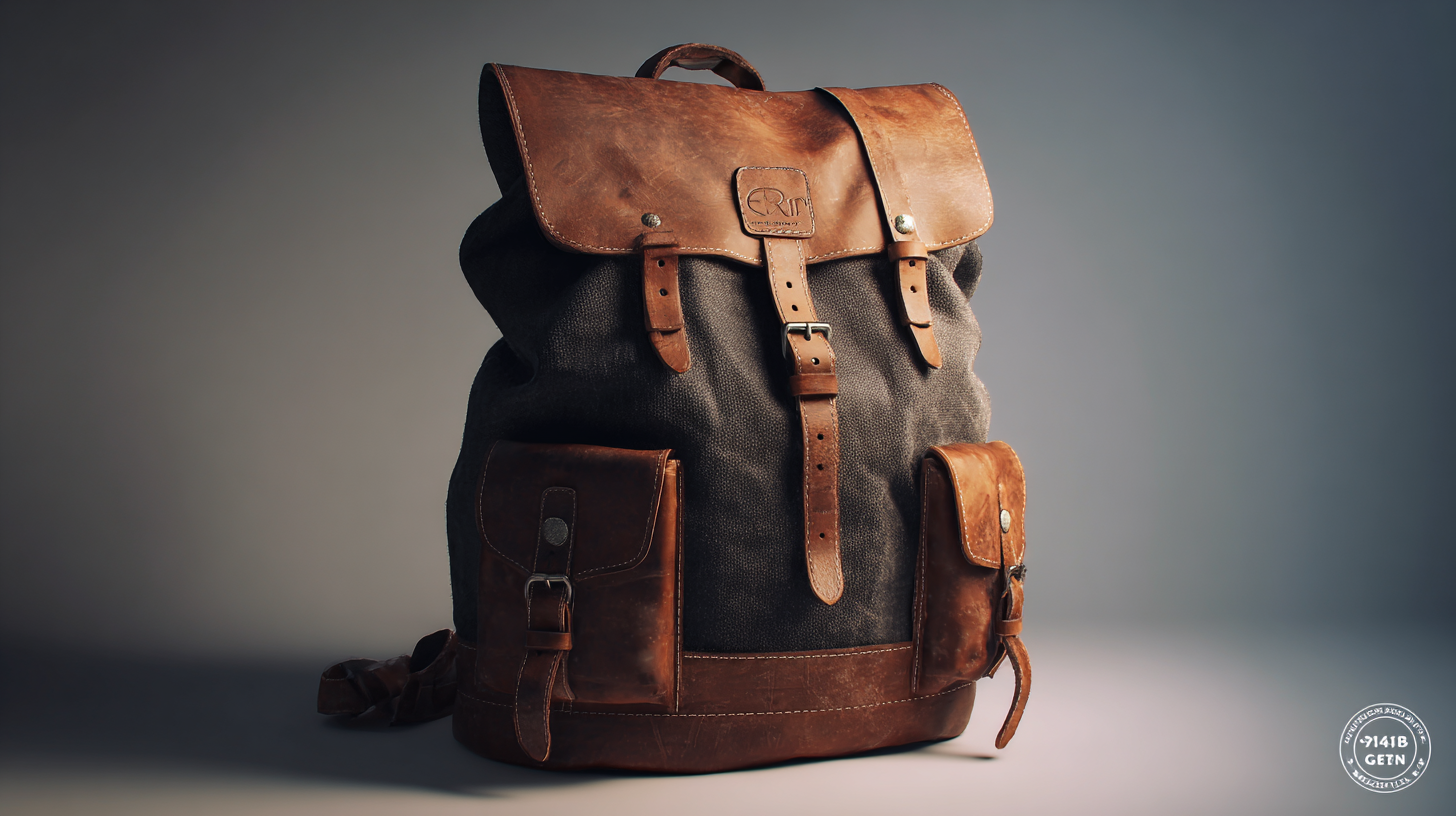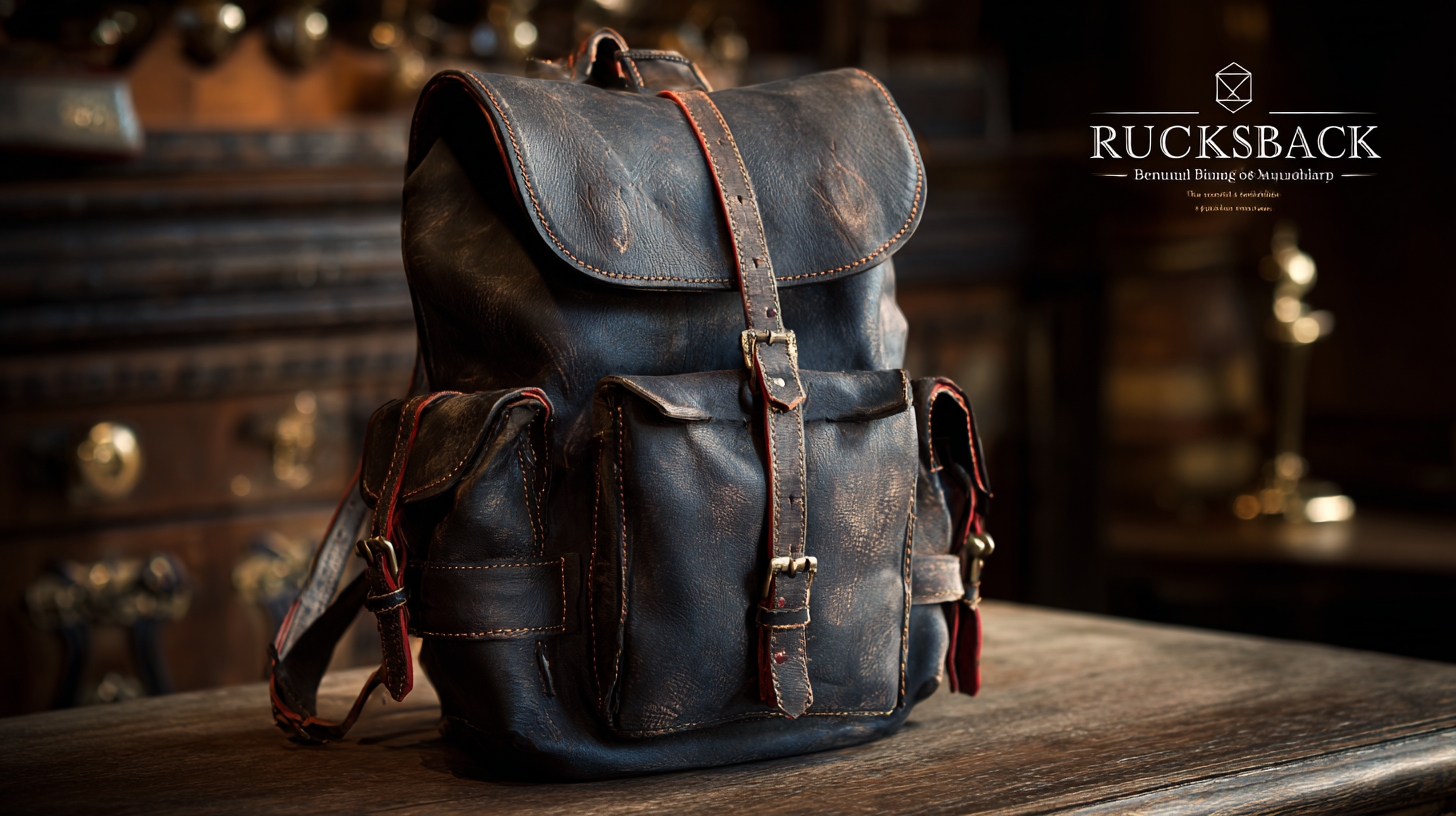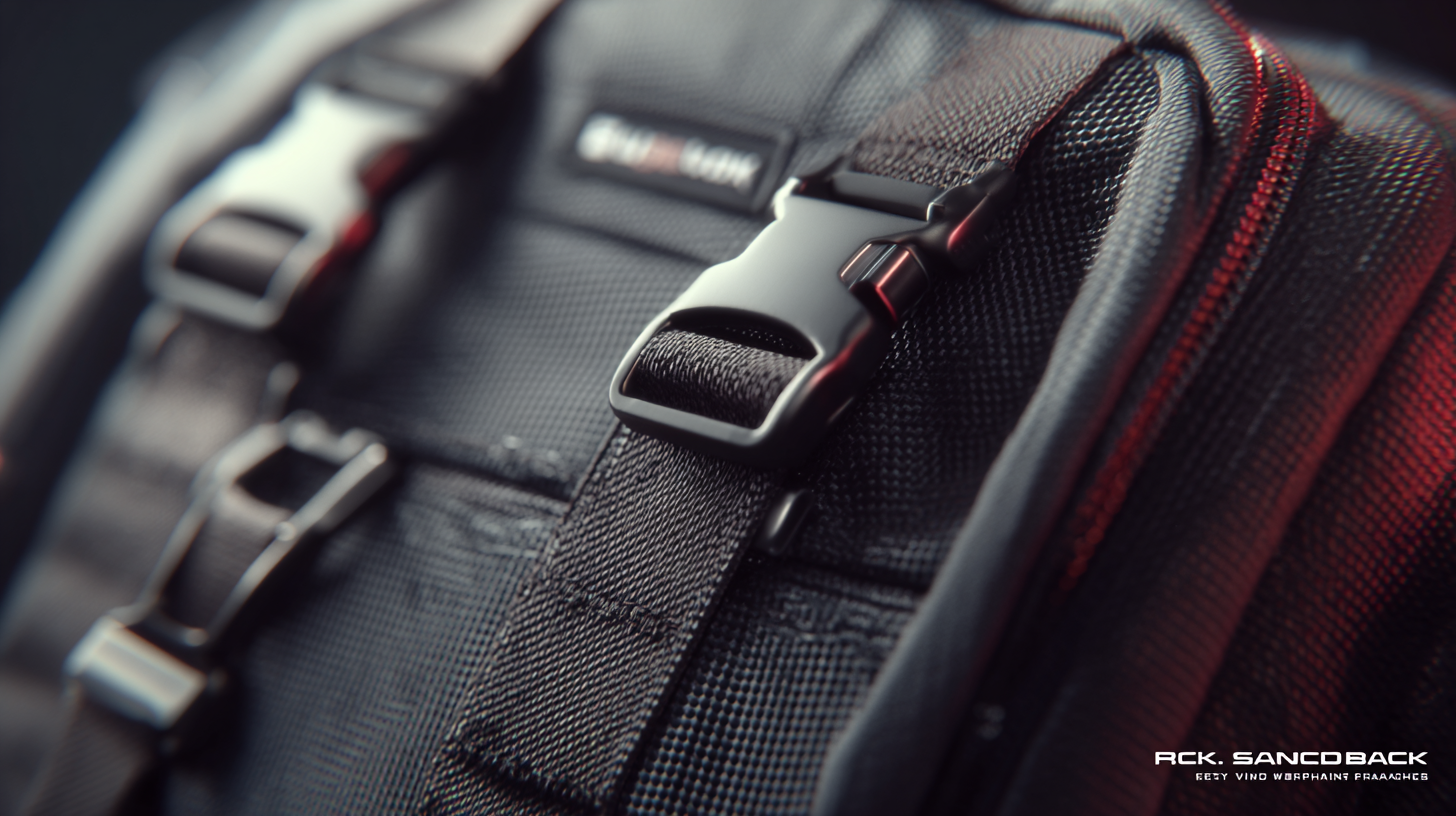Setting the Benchmark for Quality in Best Rucksack Backpack Manufacturing
In the rapidly evolving world of outdoor gear, the demand for high-quality Rucksack Backpacks has surged, with the global market projected to reach approximately $2.2 billion by 2025, growing at a CAGR of 3.4% from 2020 to 2025 (MarketWatch, 2020). This growth is fueled by an increasing number of outdoor enthusiasts and a rising trend in adventure tourism, highlighting the necessity for manufacturers to elevate their production standards.

China has emerged as a key player in the best Rucksack Backpack manufacturing scene, setting benchmarks for quality through advanced technologies and stringent quality control measures. As a global partner in superior manufacturing, Chinese companies blend traditional craftsmanship with innovative practices to meet international market demands, ensuring that every backpack produced not only meets but exceeds customer expectations. The commitment to excellence in every stitch positions Chinese manufacturers as the preferred choice for quality Rucksack Backpacks worldwide.
Key Features of Hiking Rucksacks: Durability and Comfort Metrics
When selecting a hiking rucksack, two primary metrics dominate the conversation: durability and comfort. A high-quality rucksack should withstand the rigors of nature while providing the support and convenience needed for extended trips. Look for backpacks constructed with robust materials such as ripstop nylon or polyester, which enhance longevity against wear and tear. Reinforced stitching and weather-resistant features can further resist the elements, ensuring your gear remains safe and dry.
Comfort is just as crucial, especially for those tackling longer hikes. Adjustable straps, padded back panels, and ergonomic designs help distribute weight evenly and reduce fatigue. A well-ventilated back will also keep you cool during strenuous activities. To find the right balance, consider testing different models and paying attention to how they feel when loaded with gear.
**Tip:** Always try the rucksack on with some weight inside before purchasing. This real-world test reveals how it sits on your back and whether adjustments are necessary for a snug fit.
**Tip:** Take into account the size of your rucksack. A backpack too large can lead to unnecessary weight, while one too small may limit your gear capacity. Aim for a model that accommodates your essentials without being overly bulky.
Market Insights: Growth Trends in Rucksack Manufacturing and Consumer Preferences
The global rucksack backpack market is experiencing dynamic growth driven by evolving consumer preferences and lifestyle changes. As outdoor activities gain popularity, particularly post-pandemic, the demand for high-quality backpacks is surging. In 2025, the market is projected to reach an impressive $17.46 billion, with expectations of further growth to $29.5 billion by 2033, reflecting a robust compound annual growth rate (CAGR) of 6%. This upward trend indicates a significant shift in how consumers approach outdoor experiences, favoring not just functionality but also design and comfort in their rucksack choices.
As manufacturers respond to these trends, there is a notable emphasis on producing rucksacks that combine durability with innovative features. Eco-friendly materials and advanced ergonomic designs are becoming essential in the product development process. Consumers are increasingly aware of sustainability and are looking for brands that align with their values. This inclination towards high-quality craftsmanship signifies a change in the market benchmark, as manufacturers strive to meet the evolving demands of today's outdoor enthusiasts. With this continuous transformation, the rucksack backpack manufacturing landscape is set to redefine quality standards.
Comparative Analysis: Daypacks vs. Travel Backpacks for Urban Use
When choosing a backpack for urban use, understanding the nuances between
daypacks and travel backpacks is crucial. Daypacks, generally smaller, are designed for short outings,
typically ranging from 15 to 30 liters in capacity. According to a report by the Outdoor Industry Association,
approximately 49% of urban dwellers prefer daypacks
for daily commuting and casual outings due to their lightweight design and ease of use. These packs often come with
essential features such as hydration reservoirs and organizational pockets, catering to the on-the-go lifestyle.
On the other hand, travel backpacks usually boast a larger capacity, often between 30 to 65 liters,
making them suitable for longer trips or travel. The same report highlights that about 36%
of urban adventurers opt for travel backpacks for weekend getaways or overnight trips, valuing their
versatility and ample storage options. Features like padded compartments for laptops and adjustable straps enhance
comfort and functionality, making them ideal for both city exploration and travel.
Understanding these distinctions helps consumers make informed choices that align with their specific needs
and activities in urban environments.
Specialized Designs: Features of Tactical Backpacks for Outdoor Enthusiasts
When it comes to outdoor adventures, the right tactical backpack can make all the difference. Specialized designs crafted for outdoor enthusiasts focus on functionality and durability, ensuring that each trip is comfortable and efficient. One of the most critical features of these backpacks is their ergonomic design. Comfortable shoulder straps and padded back panels distribute weight evenly, reducing strain during long hikes. Many tactical backpacks also offer adjustable waist belts that enhance support, allowing for extended periods on the trail without discomfort.

In addition to comfort, tactical backpacks are known for their robust material and weather-resistant properties. High-density nylon or polyester fabrics are commonly used, providing a sturdy exterior that withstands abrasive elements and variable weather conditions. Furthermore, these backpacks often come equipped with multiple compartments and MOLLE (Modular Lightweight Load-carrying Equipment) systems, granting outdoor enthusiasts the ability to customize organization according to their needs. From hydration reservoirs to quick-access pockets for gear, each feature serves a purpose, making tactical backpacks an essential companion for anyone ready to tackle the great outdoors.
Sustainability in Manufacturing: Eco-friendly Materials for Rucksack Production
As the demand for rucksacks continues to rise, so does the need for sustainable manufacturing practices in the backpack industry. An increasing number of consumers are prioritizing eco-friendly products, with a recent report indicating that 72% of shoppers are willing to pay more for sustainable products. This shift in consumer behavior forces manufacturers to adopt eco-friendly materials in their rucksack production processes. Materials such as recycled polyester and organic cotton not only reduce the environmental impact but also align with the growing expectations of environmentally conscious consumers.
When choosing materials for rucksack production, it's essential to consider their life cycle impact. Opting for fabrics that are certified by organizations like the Global Recycle Standard (GRS) ensures that the materials have been sourced sustainably. Additionally, incorporating biodegradable materials can significantly minimize the environmental footprint of the product.
**Tip:** Always verify the sourcing and environmental certifications of materials. Research suppliers for their commitment to sustainability and consider partnering with those that demonstrate genuine eco-friendly practices.
Implementing eco-friendly practices in manufacturing doesn’t have to compromise quality. In fact, using innovative materials can enhance product durability and performance, leading to long-lasting backpacks that meet user expectations. Manufacturers should also invest in technology that minimizes water usage and emissions during production, contributing to a more sustainable future for the industry.
**Tip:** Conduct regular audits of your supply chain to identify areas where sustainability can be improved. Continuous assessment helps in meeting both ethical standards and consumer expectations effectively.
